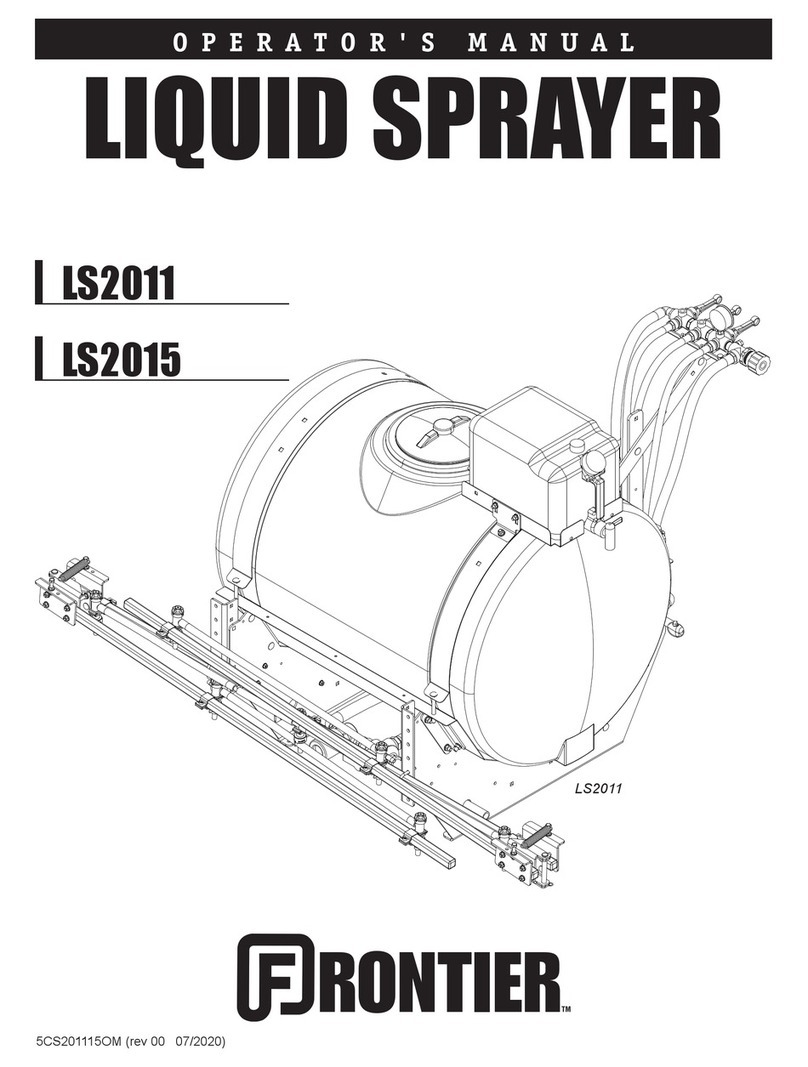
5CS2004OM (rev 00 07/2020)6
• Reserve all equipment used for the
application of chemicals exclusively for that
purpose.
• Prohibit all smoking, drinking and eating
food in chemical-handling area.
• It is a good practice to take a soapy shower
immediately after using the sprayer to apply
chemicals.
• Wash all clothing worn when using
chemicals separately in the laundry after
spraying is completed.
Read Chemical Container Label
• Chemicals can be dangerous. Improper
selection or use can injure persons, animals,
plants, soils or other property. Select the
right chemical for the job and handle and
apply with care.
• Read the instructions, precautions, and
warnings on the container label before
opening. Use the product strictly according
to label directions for specic applications, in
the amounts specied, at the times specied
and only when needed.
• Keep the container closed tightly except
when preparing the mix.
• Do not remove labels from chemical
containers. Store all chemicals in their
original containers.
• Do not mix chemicals unless stated on the
container label.
• Store chemicals when not in use according
to the container label.
Handle Chemical Products Safely
• Direct exposure to hazardous chemicals
can cause serious injury. Potentially
hazardous chemicals used with Frontier
equipment include pesticides, herbicides
and fungicides.
• A Safety Data Sheet (SDS) provides specic
details on chemical products: physical and
health hazards, safety procedures, and
emergency response techniques.
• The SDS should be obtained from the
chemical dealer at the time of the chemical
purchase.
• Check the SDS before beginning any job
using a hazardous chemical. Know exactly
what the risks are and how to do the job
safely.
• Always wear recommended personal
protection equipment.
Practice Safe Maintenance
• Only qualied, trained adults should service
this machine.
• Understand service procedure before doing
work. Keep area clean and dry.
• Do not operate the engine in a conned
space where dangerous carbon monoxide
fumes can collect.
• Never lubricate, service or adjust the
machine or attachment while it is moving.
Keep safety devices in place and in working
condition. Keep hardware tight.
• Keep hands, feet, clothing, jewelry, and long
hair away from any moving parts, to prevent
them from getting caught.
• Lower any attachment completely to
the ground or to an existing attachment
mechanical stop before servicing the
attachment. Disengage all power and stop
the engine. Lock park brake and remove the
key. Let machine cool.
• Disconnect battery before making any
repairs.
• Before servicing machine or attachment,
carefully release pressure from any
components with stored energy, such as
hydraulic components and springs.
• Release hydraulic pressure by lowering
attachment or cutting units to the ground or
to a mechanical stop and move hydraulic
control levers.
Safety





























